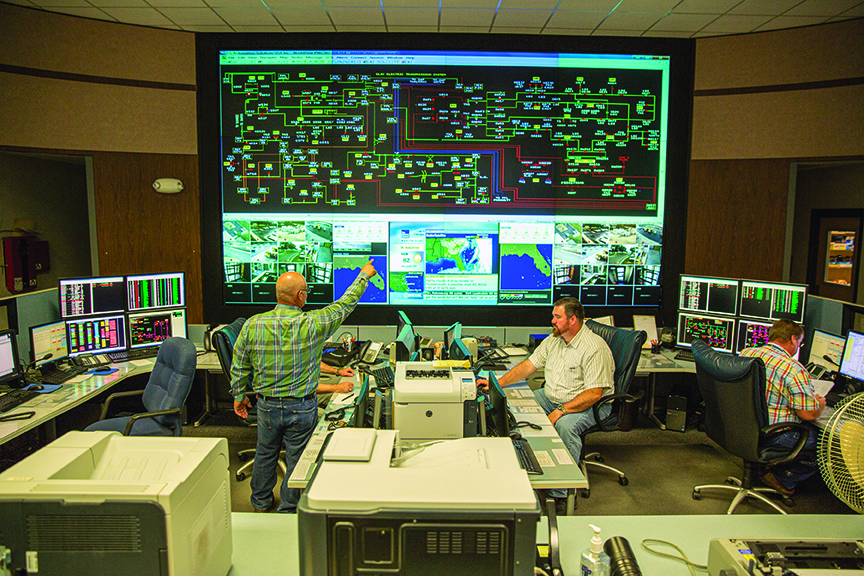Pitch in to avoid gridlock
September 2025

Electric co-ops work closely with power supply providers in preparing for peak demand.
by Jennah Denney, Contributing Columnist
Extreme temperatures, whether during summer or winter months, drive up the demand for electricity as homes and businesses rely on air conditioning or heating to stay safe and comfortable. Every year, the North American Electric Reliability Corporation, the nation’s watchdog for grid reliability, issues two Reliability Assessment reports — one for summer months and one for winter. These bi-annual assessments provide independent views of how prepared the U.S. grid is to meet electricity demand when temperatures soar or dip.
The NERC assessments are critical planning tools for electric utilities as they prepare for peak demand months. The reports provide a comprehensive evaluation of the North American Bulk Power System and highlight areas of reliability concern.
Electric cooperatives want their members to understand how these surges in demand can impact you — and how you can play an essential role in supporting reliable electric service for local communities.
The electric grid is a vast network comprised of power plants, transmission lines and distribution systems that work together to deliver electricity to homes and businesses. Grid reliability means ensuring enough electricity is always available to meet demand — even on the hottest and coldest days of the year.
According to NERC’s most recent assessment, our electric grid is experiencing rapid load growth. Across North America, the total forecasted peak demand for summer months increased by more than 10 gigawatts since 2024 — more than double the increase seen in 2023. This growth is being driven by continued economic activity, expansion of data centers and industrial facilities, and increasing electrification across many sectors.
At the same time, more than 7.4 GW of generation capacity has retired or gone inactive since last summer. Retirements include natural gas, coal, nuclear and other types of generation, which reduces the availability of dispatchable resources that can operate at any time to help balance the grid. But new resources are becoming available to help meet some of this growing demand. Over 30 GW of new solar capacity and 13 GW of new battery storage are already contributing to increased demand requirements.
While most regions are prepared to meet demand under normal conditions, the NERC assessment highlights that some areas — including parts of the Midwest, New England and Texas — face elevated risk of supply shortfalls during periods of above-normal demand or low resource availability. These risks may occur during extended periods of extreme temperatures or when generation outages coincide with high loads.
Electric cooperatives rely on the collective actions of individual consumers to help maintain reliability when the system is under stress. This is where you can help. Stay informed and watch for communications from your electric co-op about peak demand periods or energy
conservation requests. Quick actions taken by co-op members can make a meaningful difference.
Adjusting your thermostat by a few degrees, postponing use of large appliances until evening hours and turning off lights and unnecessary electronics are simple, practical ways you can help ease strain on the grid.
As the electric grid evolves — with changing generation resources, new technologies and growing demand — maintaining reliable service requires careful planning and participation from everyone. NERC will likely release the 2025-2026 Winter Reliability Assessment in November, which will provide regional electric cooperatives with key insights into winter reliability.
Your electric co-op is working closely with your power supply providers in preparing for peak demand, and your actions to conserve during these times are equally important. By working together, we can help ensure our community continues to receive reliable and affordable electric service throughout periods of high demand.
Jennah Denney writes on consumer and cooperative affairs for the National Rural Electric Cooperative Association.
